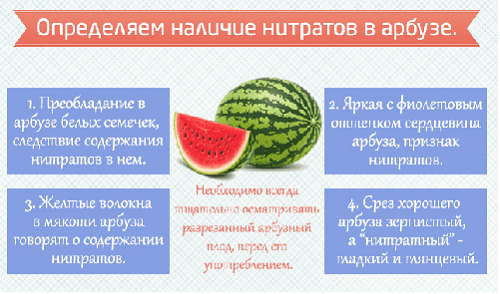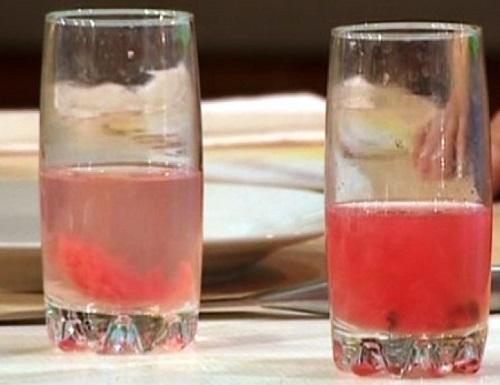How to determine nitrates in watermelon?
Watermelon is one of the most favorite treats for both adults and children. The giant striped berry is not only tasty, but also very useful for the body. It is not in vain that it is recommended to use watermelon when following a diet, because its use helps to cleanse the kidneys, and also removes toxins.
However, with the beginning of the season of vegetables and berries, consumers are in danger of purchasing low-quality products. The fact is that in order to obtain an earlier harvest, producers feed almost all crops with nitrates. For the sake of great profit, the allowed amount of nitrates is often exceeded many times. Watermelon, "stuffed" with them, becomes hazardous to health and causes food poisoning. Therefore, it is so important not to buy the first early fruits and berries, especially for children.

How to determine the increased amount nitrates in watermelonto protect your family from unwanted consequences? The most accurate will be the use of laboratory methods or a special apparatus - a nitrate meter, but this is not very acceptable at home. First of all, you should choose the right berries when buying and carefully examine them.
How to choose a quality watermelon?

For watermelon, you should go to specialized vegetable rows. Unlike spontaneous markets, sellers there have documents for a sale permit and storage conditions are observed.
When choosing a berry, you need to pay attention to the following points:
- the fruit should be intact, without traces of damage on the skin;
- to the touch, the watermelon is hard from all sides, without soft, rotting areas, slightly rough, but not smooth;
- the stalk of a ripe watermelon is dry, and the fruit itself rings on impact;
- the earthen spot on the side where the watermelon touched the soil has an even yellow color.
Home methods for determining the presence of nitrates

You can independently determine nitrates in watermelons using plain water. There are two options for checking:
- Pour water into a large container and dip a whole watermelon into it. A "drowned" fruit indicates a large amount of nitrates, and a floating one can be consumed without any fear.
- Cut a slice of watermelon pulp and place it in a half-liter jar of water. The liquid should turn slightly pink or cloudy. The deep pink, red or purple color of the water confirms the presence of nitrates.
The rind of the watermelon accumulates the most nitrates, so it should be cut to a pink pulp.

Sometimes you can literally check the safety of a berry by eye. In a watermelon overfed with nitrates, in the section, you can see streaks of yellow instead of white, and the flesh itself has an unnatural red color. In addition, the rind of the watermelon is perfectly smooth and shiny. It is impossible to acquire such a watermelon, and even more so to use it.